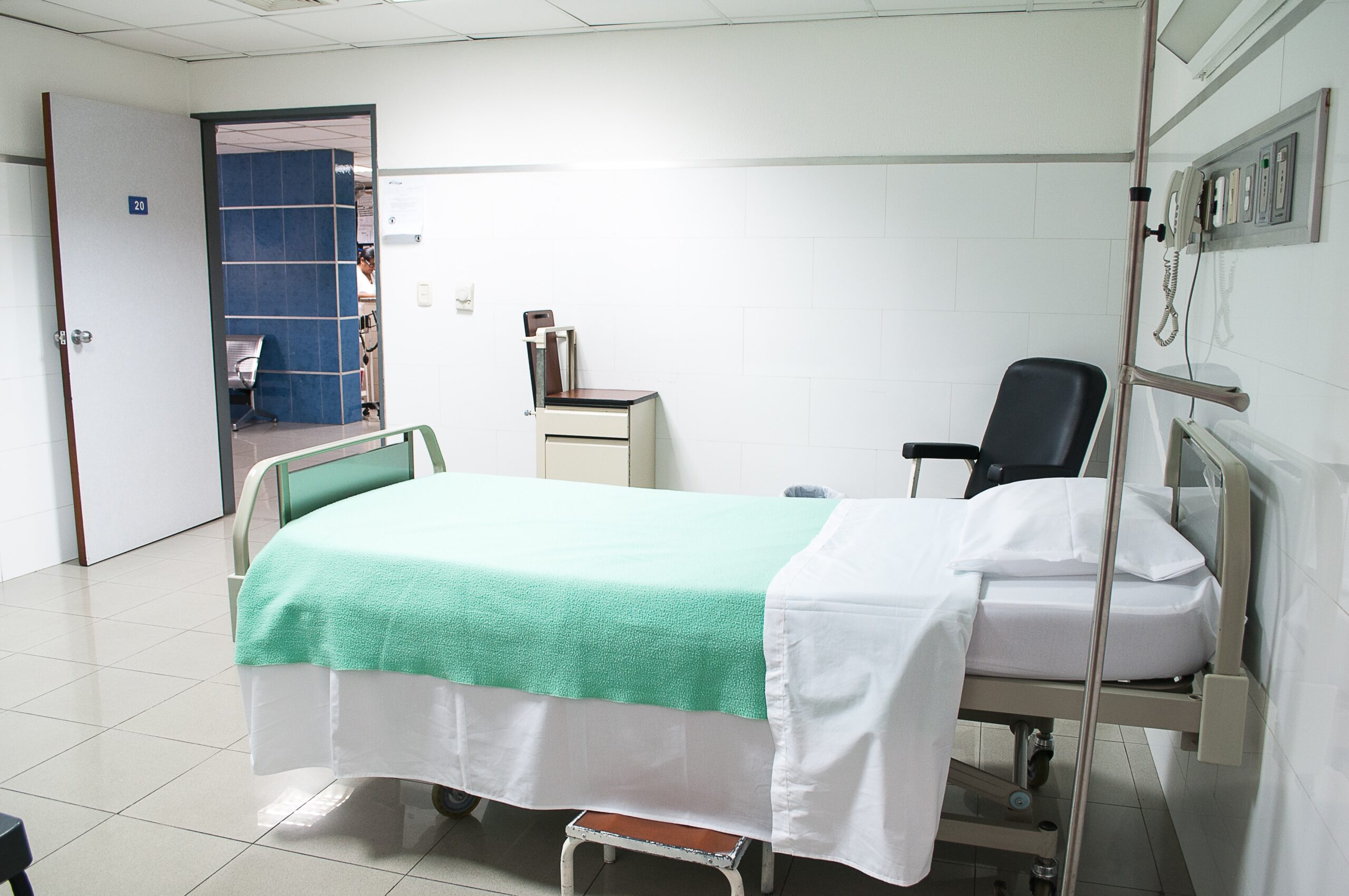Have you ever wondered about the early signs of prostate issues? It's natural to have questions and concerns, especially as you age. Prostate issues can be a common health concern for men, and catching them early is important for timely treatment. In this article, we will explore the early signs of prostate issues, shedding light on what to look out for and providing valuable information to help you take proactive steps towards your health. So, let's dive right in and find out what these early signs might be!

Understanding the Prostate
The prostate is a small, walnut-shaped gland located below the bladder and in front of the rectum. Even though it is small, the prostate plays a crucial role in the male reproductive system. Its main function is to produce and secrete fluid that nourishes and protects sperm. This fluid, along with sperm, makes up semen, which is ejaculated during sexual activity.
As men age, the prostate naturally undergoes changes. It gradually grows larger over time, a process known as prostate enlargement or benign prostatic hyperplasia (BPH). This is a common occurrence and is not usually a cause for concern. However, it can sometimes lead to urinary symptoms and other issues. Another change that can occur in the prostate is the development of abnormal cells, which can potentially lead to conditions such as prostatic intraepithelial neoplasia (PIN), prostatitis, or even prostate cancer.
Common Prostate Issues
Prostate Enlargement (BPH)
Prostate enlargement, also known as benign prostatic hyperplasia (BPH), is a condition that affects many men as they age. As the prostate gland grows larger, it can put pressure on the urethra, which is the tube that carries urine from the bladder out of the body. This can result in various urinary symptoms, such as trouble starting and stopping urination, frequent urination (especially at night), a weak or slow urinary stream, urine leakage or dribbling, and a feeling of incomplete bladder emptying. While BPH is a noncancerous condition, it can significantly impact a man's quality of life.
Prostatic Intraepithelial Neoplasia (PIN)
Prostatic intraepithelial neoplasia (PIN) refers to the presence of abnormal cells in the prostate gland. It is not considered cancer, but it can sometimes be a precursor to prostate cancer. PIN is generally detected during a biopsy performed for other reasons, such as an elevated prostate-specific antigen (PSA) level or abnormal digital rectal examination (DRE) findings. Further evaluation with subsequent biopsies may be necessary to monitor for any progression to prostate cancer.
Prostatitis
Prostatitis is the inflammation of the prostate gland, which can cause pain and discomfort. It can result from various factors, such as bacterial infection, autoimmune disorders, or pelvic trauma. Symptoms of prostatitis may include pain or discomfort in the lower back, upper thighs, or hips; discomfort or pain while sitting; and pain during ejaculation. Prostatitis can be categorized into acute bacterial prostatitis, chronic bacterial prostatitis, chronic prostatitis/chronic pelvic pain syndrome, and asymptomatic inflammatory prostatitis. Treatment options vary depending on the specific type and underlying cause of prostatitis.
Prostate Cancer
Prostate cancer is a condition in which abnormal cells develop in the prostate gland. It is one of the most common forms of cancer in men. Early-stage prostate cancer may not cause noticeable symptoms, making regular screening essential for early detection. If symptoms do occur, they can include persistent bone pain or fractures, changes in bowel habits, anemia or low red blood cell count, and swelling in the legs or pelvic area. Prostate cancer is usually diagnosed through a combination of PSA tests, DRE, biopsies, and imaging tests.
Signs of Prostate Issues Related to Urination
Problems with urination can often be indicators of prostate issues. If you experience any of the following symptoms, it may be wise to consult with a healthcare professional:
Trouble with Starting and Stopping Urination
One common sign of prostate issues is difficulty initiating or stopping the flow of urine. This may manifest as a weak urine stream or the need to strain when urinating. If you notice changes in your ability to control the start and stop of urination, it is important to get evaluated by a healthcare provider.
Frequent Urination, Especially at Night
Another sign to look out for is an increase in the frequency of urination, particularly during the night. If you find yourself waking up multiple times to urinate or needing to urinate more frequently throughout the day, it could be an indication of prostate issues.
Weak or Slow Urinary Stream
A weakened or slowed urinary stream can occur as a result of prostate enlargement or other prostate issues. This can make the process of urination more time-consuming and frustrating. If you notice a change in the force or speed of your urine stream, it is worth discussing with a healthcare professional.
Urine Leakage or Dribbling
An inability to fully control urine flow, leading to urine leakage or dribbling, is another potential sign of prostate issues. This can be a source of embarrassment and inconvenience, but it is important to remember that help is available and seeking medical advice can lead to effective treatment.
A Feeling of Incomplete Bladder Emptying
If you frequently experience the sensation that your bladder is not completely empty, it could be due to prostate issues. This feeling of incomplete bladder emptying can be frustrating and may require further evaluation by a healthcare provider.
Pain and Discomfort as Indicators of Prostate Problems
Prostate issues can also cause pain and discomfort in various areas of the body. If you experience any of the following symptoms, it is advisable to seek medical attention:
Pain in the Lower Back, Upper Thighs, or Hips
Prostate problems, such as prostatitis or prostate cancer, can cause pain in the lower back, upper thighs, or hips. This discomfort may range from mild to severe and can impact daily activities. If you notice persistent pain in these areas, it is important to consult with a healthcare professional for a thorough evaluation.
Discomfort or Pain while Sitting
Some individuals with prostate issues may experience discomfort or pain when sitting for extended periods. This can be due to inflammation or pressure on the prostate gland. If you find that sitting exacerbates your symptoms, it is recommended to seek medical advice to determine the underlying cause.
Pain during Ejaculation
Prostate issues, particularly prostatitis, can cause discomfort or pain during ejaculation. This can potentially affect sexual satisfaction and overall well-being. If you experience pain or discomfort during ejaculation, discussing this with a healthcare professional can help determine the appropriate course of action.

Sexual Dysfunction as a Symptom of Prostate Issues
Prostate problems can also manifest as sexual dysfunction. If you notice any changes in your sexual health, it is crucial to address them with a healthcare provider:
Erectile Dysfunction
Erectile dysfunction (ED), or the inability to achieve or maintain an erection sufficient for sexual activity, can be a symptom of prostate issues. Both prostate enlargement (BPH) and prostate cancer can contribute to ED. If you experience persistent difficulties with erections, it is important to consult with a healthcare professional who can determine the underlying cause and recommend appropriate treatment options.
Decreased Sexual Desire
Prostate issues, including prostate cancer and hormonal changes associated with aging, can lead to a decrease in sexual desire or libido. If you notice a significant decrease in your interest or motivation for sexual activity, it is advisable to consult with a healthcare professional to explore potential causes and discuss possible treatment options.
Blood in Semen or Painful Ejaculation
Presence of blood in semen or painful ejaculation can be alarming symptoms that may be associated with prostate issues. If you notice either of these symptoms, it is important to seek medical evaluation to determine the underlying cause and appropriate management.
Systemic Symptoms Associated with Prostate Issues
In some cases, prostate issues can lead to systemic symptoms that affect the overall well-being of an individual. It is important to recognize these symptoms and seek medical attention if they arise:
Unexplained Weight Loss
Unexplained weight loss can occur with prostate issues, particularly in cases of advanced prostate cancer. If you notice a significant and unexplained drop in weight, it is crucial to consult with a healthcare professional for evaluation and appropriate management.
Loss of Appetite
Loss of appetite can be associated with various prostate issues, including advanced prostate cancer. If you experience a persistent decrease in appetite and unintentional weight loss, it is advisable to seek medical advice for further evaluation.
Fatigue or Exhaustion
Prostate issues, especially advanced prostate cancer or systemic infections, can cause fatigue or exhaustion. If you feel persistently tired, lacking in energy, or unable to carry out your regular activities, it is important to consult with a healthcare professional to identify the underlying cause and discuss possible interventions.
Nausea and Vomiting
Prostate issues, such as advanced prostate cancer or certain treatments, can lead to nausea and vomiting. These symptoms can significantly impact daily life and overall well-being. If you experience persistent nausea or vomiting, it is important to seek medical evaluation and management to alleviate these symptoms.

Early Signs of Prostate Cancer
Early detection of prostate cancer is crucial for better treatment outcomes. The following signs may indicate the need for further evaluation:
Persistent Bone Pain or Fractures
Prostate cancer cells can spread to the bones, resulting in persistent bone pain, particularly in the lower back, hips, or thighs. If you experience unexplained and persistent bone pain or fractures, it is essential to consult with a healthcare professional for appropriate evaluation and management.
Change in Bowel Habits
Changes in bowel habits, such as pain, irregularity, or blood in the stool, can be associated with advanced prostate cancer. If you notice any significant changes in your bowel movements, it is advisable to seek medical attention for an evaluation.
Anemia or Low Red Blood Cell Count
Prostate cancer can lead to anemia or a low red blood cell count. Symptoms of anemia may include fatigue, weakness, shortness of breath, and pale skin. If you experience these symptoms, it is important to consult with a healthcare professional for further evaluation and appropriate management.
Swelling in the Legs or Pelvic Area
Advanced prostate cancer can cause swelling or edema in the legs or pelvic area. If you notice an abnormal swelling in these regions, it is crucial to seek medical evaluation to determine the underlying cause and appropriate interventions.
Risk Factors for Developing Prostate Issues
Certain factors can increase the likelihood of developing prostate issues. It is important to be aware of these risk factors and take proactive steps to manage them:
Age
Age is a significant risk factor for prostate issues. As men grow older, the risk of developing prostate conditions, such as prostate enlargement or prostate cancer, increases. Regular check-ups and screenings become particularly important as men enter their 40s and beyond.
Family History of Prostate Issues or Cancer
Having a family history of prostate issues or prostate cancer can increase an individual's risk. If you have close relatives, such as a father or brother, who have had prostate problems or were diagnosed with prostate cancer, it is advisable to inform your healthcare provider. This may warrant more frequent screenings or earlier interventions.
Obesity
Obesity has been linked to an increased risk of prostate issues, including prostate enlargement (BPH) and prostate cancer. Maintaining a healthy weight through regular physical activity and a balanced diet can help reduce the risk of developing these conditions.
Smoking
Smoking is not only detrimental to overall health but has also been associated with an increased risk of prostate cancer. By quitting smoking or avoiding tobacco use, individuals can significantly reduce their risk of developing prostate issues.
Diet and Lifestyle Factors
Certain dietary and lifestyle factors may influence the risk of prostate issues. Consuming a diet rich in fruits, vegetables, whole grains, and lean protein, while limiting red meat and processed foods, has been associated with a lower risk of prostate problems. Regular physical activity, stress management, and maintaining a healthy weight are also key factors in promoting prostate health.

Screening and Diagnosis for Prostate Issues
Regular screenings and timely diagnosis are essential for detecting and managing prostate issues effectively. The following methods may be used to screen and diagnose such conditions:
Prostate-Specific Antigen (PSA) Test
The PSA test measures the level of prostate-specific antigen in the blood. Elevated PSA levels can indicate the presence of prostate issues, including prostate enlargement or prostate cancer. However, it is important to note that an elevated PSA level does not necessarily equate to a diagnosis of prostate cancer, as other factors can contribute to increased PSA levels. Further evaluation and diagnostic testing may be required to determine the underlying cause.
Digital Rectal Examination (DRE)
A digital rectal examination allows a healthcare provider to manually assess the size, shape, and texture of the prostate gland. During this procedure, a gloved finger is inserted into the rectum to feel for any abnormalities in the prostate. The DRE can help detect conditions such as prostate enlargement or suspicious lumps that may require further investigation.
Biopsy
A biopsy involves the removal of a small tissue sample from the prostate gland for further examination under a microscope. It is typically performed if there are abnormal findings on a PSA test or DRE, or if other symptoms raise suspicion of prostate cancer. A biopsy can provide a definitive diagnosis and help determine the appropriate course of treatment.
Imaging Tests like Ultrasound or MRI
Imaging tests, such as ultrasound or magnetic resonance imaging (MRI), may be used to obtain detailed images of the prostate and surrounding structures. These tests can assist in identifying any abnormalities or suspicious areas, guiding further evaluation and treatment planning.
Management and Treatment Options for Prostate Issues
The management and treatment options for prostate issues depend on the specific condition and its severity. The following approaches may be considered:
Active Surveillance for Mild Symptoms
For mild cases of prostate enlargement or certain prostate conditions, a healthcare provider may recommend active surveillance or watchful waiting. This involves monitoring the condition closely without immediate intervention. Regular check-ups, screenings, and lifestyle modifications may be recommended to manage symptoms and prevent progression.
Medications
Medications can often be effective in managing symptoms associated with prostate issues. For example, medications called alpha-blockers can help relax the muscles in the prostate and bladder neck, improving urinary flow. Other medications, such as 5-alpha-reductase inhibitors, can help shrink the prostate gland in cases of prostate enlargement. Antibiotics may be prescribed for prostatitis. It is important to take medications as prescribed and discuss any potential side effects or concerns with a healthcare provider.
Surgical Interventions
Surgical interventions may be necessary for more severe cases of prostate enlargement or prostate cancer. Procedures such as transurethral resection of the prostate (TURP) or laser surgery can help alleviate urinary symptoms by removing or reducing the size of the prostate gland. Surgery options for prostate cancer may include radical prostatectomy, which involves the complete removal of the prostate gland, and radiation therapy may also be used as a treatment modality.
Alternative Therapies
Some individuals may explore alternative therapies or complementary approaches to manage prostate issues. These can include herbal remedies, acupuncture, or certain dietary supplements. It is important to consult with a healthcare provider before initiating any alternative therapies to ensure they are safe and effective.
Lifestyle Changes
Making certain lifestyle changes can have a positive impact on prostate health. Regular exercise, maintaining a healthy weight, and consuming a balanced diet can help reduce the risk of prostate issues. Limiting alcohol intake and quitting smoking are also essential for overall health. It is advisable to discuss any lifestyle changes with a healthcare provider for personalized recommendations.
In conclusion, understanding the prostate and its function is vital for men's health. Recognizing the early signs of prostate issues and seeking timely medical attention can lead to early detection and better treatment outcomes. Regular screenings, along with lifestyle modifications and appropriate management strategies, can help maintain prostate health and overall well-being. Remember to consult with a healthcare professional for personalized advice and guidance regarding prostate health.


